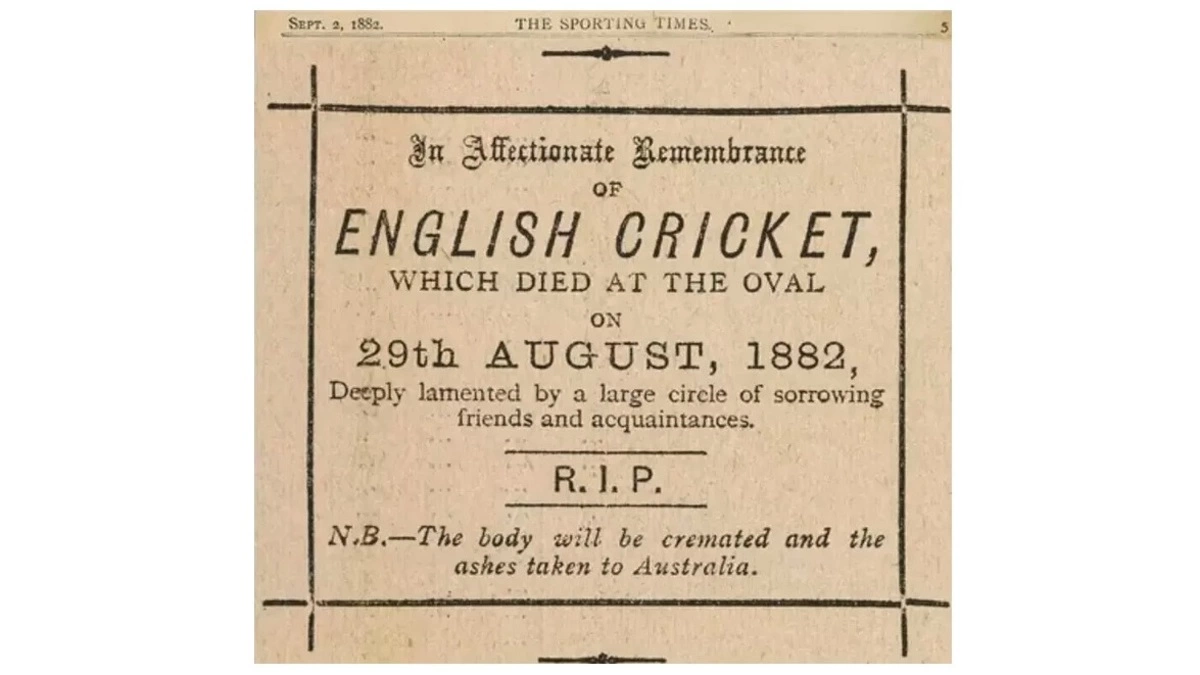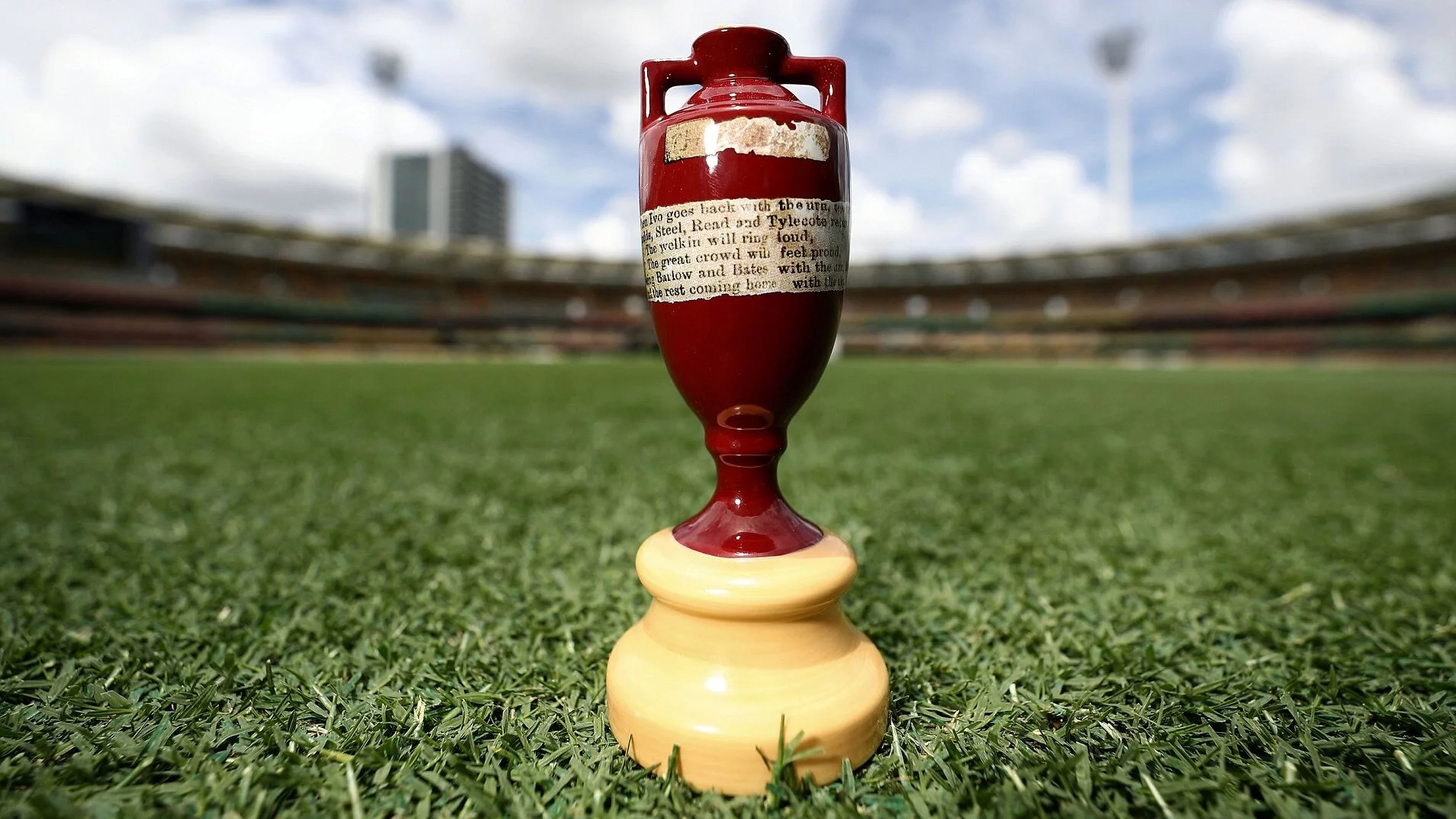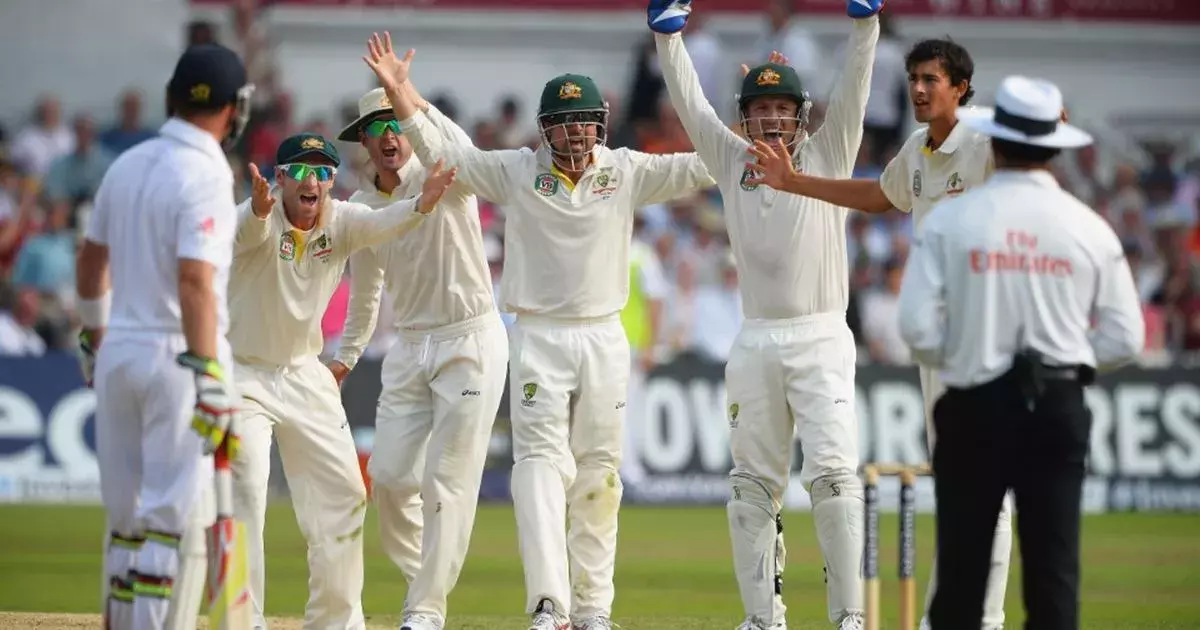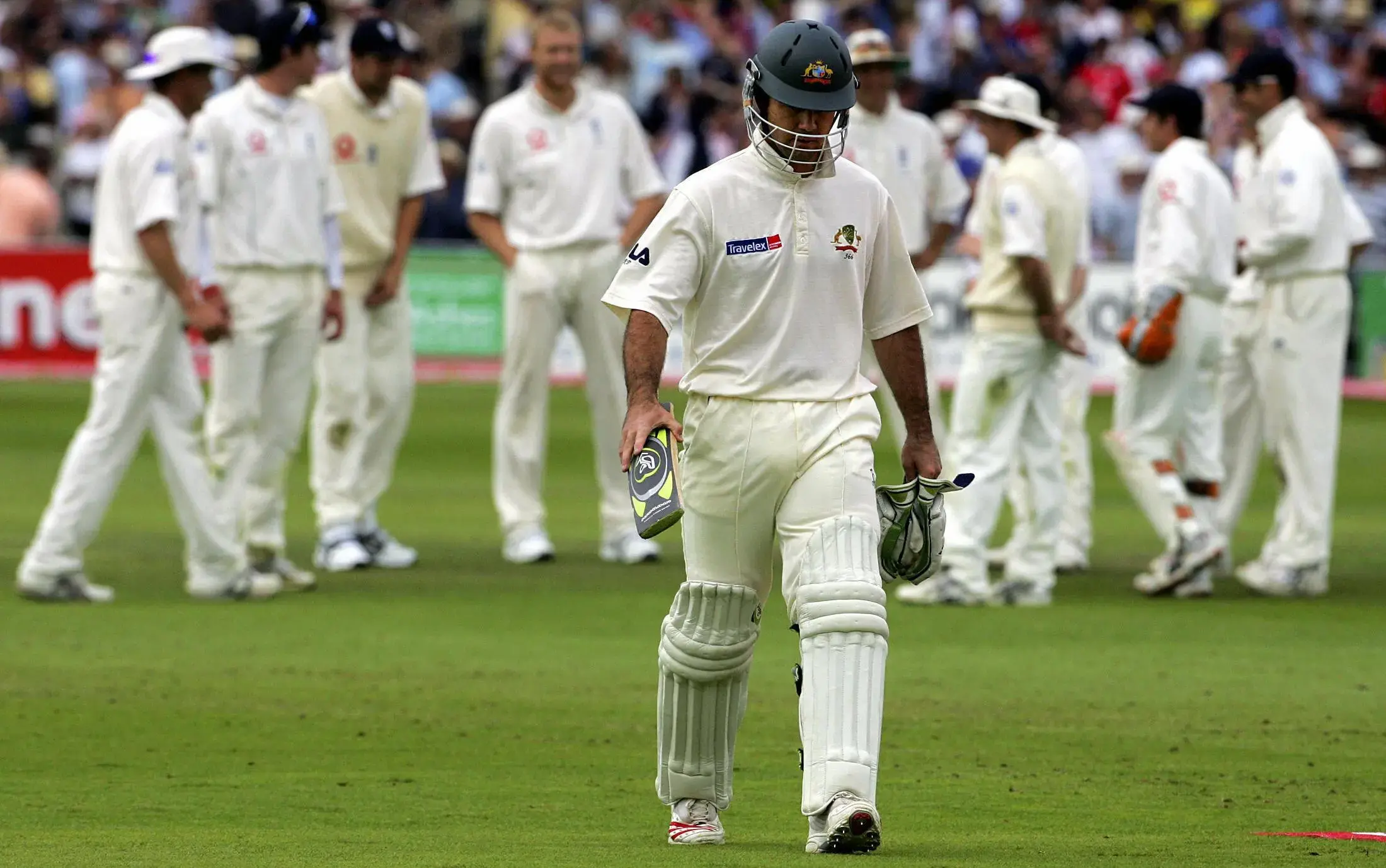
Ashes Series

A few rivalries are as intense or historic as the Ashes series between England and Australia. This competition, steeped in tradition and folklore, has been a cornerstone of international cricket since the 19th century. But what is the story behind the Ashes, and why does it continue to captivate audiences worldwide?
The Ashes Series: A Historic Rivalry in Cricket’s Annals Fueled by Drama, Controversy, and Sporting Legend

The Ashes is a Test cricket series played between England and Australia. The term originated in a satirical obituary published in a British newspaper, The Sporting Times.
Published immediately after Australia’s 1882 victory at The Oval, its first Test win on English soil. The obituary stated that English cricket had died, and the body will be cremated and the ashes taken to Australia.

The Quest to Regain the Ashes
The mythical ashes mentioned in The Sporting Times obituary immediately became associated with the 1882–83 Test series played in Australia.
Before the tour, the English captain, Ivo Bligh, made a now-famous vow to “regain those ashes“. The English media thus dubbed the series as the quest to regain the Ashes, igniting an intense desire for redemption among English cricketers.
The Ashes Urn: A Symbol of Victory

As the 1882-83 series unfolded, England emerged victorious in two of the three Tests. In a poetic and symbolic gesture, a small urn was presented to Ivo Bligh by a group of Melbourne women, including Florence Morphy, whom Bligh later married.
The contents of the urn were rumored to be the ashes of a wooden bail, humorously referred to as “the ashes of Australian cricket“. This urn would later become the symbolic trophy presented to the winning team in subsequent Ashes series.
A Tradition of Rivalry
The Ashes series is traditionally of five Tests, hosted in turn by England and Australia at least once every two years. There have been 71 Ashes series: Australia has won 33, England 32 and six series have been drawn.
The Women’s Ashes
In addition to the series for the men’s teams, women’s teams also compete in the Women’s Ashes since 1934. The series format was originally the same as the men’s, but since 2013 the Women’s Ashes has been decided on a points system.
Top 5 Controversial Moments in History of the Ashes Series

The Ashes Series history is not only marked by the intense cricketing rivalry between England and Australia but also by a series of controversies that have added an extra layer of drama to the proceedings.
These incidents have often sparked heated debates among fans and pundits alike, further fueling the anticipation for the England vs Australia Ashes Series.
1. The Bodyline Saga (Ashes 1932-33)
One of the most infamous incidents in the Ashes Series history is the Bodyline saga. This controversy arose during the Ashes 1932-33 in Australia when the English team devised a strategy, known as the ‘Leg Theory‘.
The goal of these strategy is to stop Australia’s premier batsman, Donald Bradman. The plan involved bowling at the body of the batsman at pace with the leg-stump line.
This strategy, while effective in limiting run-scoring, was also dangerous, leading to several injuries. England won the series 4-1, but their Bodyline approach was widely criticized.
2. Lillee’s ‘ComBat’ (Ashes 1978-79)
In the first Ashes Test at Perth in 1979, Australian cricketer Dennis Lillee caused a stir when he walked onto the field with a metal bat, known as the ‘ComBat‘.
After hitting a boundary, England skipper Mike Brearley raised objections about the bat with the on-field umpires. Following a heated altercation, Lillee was asked to give up his metal bat.
3. Broad’s Refusal to Walk (Ashes 2013)

In the Trent Bridge Test of Ashes 2013, England seamer Stuart Broad caused controversy when he refused to walk after edging a delivery from left-arm spinner Ashton Agar to Michael Clarke at first slip.
The umpire did not rule him out, and Broad, who was batting on 37 then, went on to add 28 more runs. England won the Test by just 14 runs, leading to severe criticism of Broad’s actions.
4. Ponting’s Run-Out (Ashes 2005)

During the 4th Test of the Ashes 2005 series at Trent Bridge, Australian captain Ricky Ponting was run out by substitute fielder Gary Pratt.
Ponting, who was dismissed for 48, was visibly upset as he walked off the field, mouthing off expletives towards the England dressing room.
5. Bairstow-Bancroft ‘Headbutt’ Incident (Ashes 2017-18)
In the 2017-18 Ashes series, England wicket-keeper Jonny Bairstow was under investigation following a late-night incident with Australian Test opener Cameron Bancroft.
The incident, which took place on a night out in Perth in October 2017, sparked heated confrontations on the field during the Brisbane Test.
Iconic Moments in the Ashes Series History

The Ashes Series history is filled with iconic moments. These moments, whether they are stunning displays of skill, sportsmanship, or sheer determination.
Here, we look back at some of the most memorable moments in the England vs Australia Ashes Series.
1. Shane Warne’s Ball of the Century
In the 1993 Ashes Test Series, Australian spin king Shane Warne delivered what is now known as the ‘Ball of the Century’.
His first delivery in an Ashes Test on English soil, the ball pitched way outside leg stump before spinning back past the bat of Mike Gatting to hit the off-stump.
2. Botham’s Ashes (1981)

The 1981 Ashes Series, often referred to as ‘Botham’s Ashes’, is one of the most memorable in Ashes Series history. England all-rounder Ian Botham put on a spectacular performance that turned the series on its head.
After resigning as captain following two disappointing Tests, Botham returned to the team as a player for the third Test at Headingley.
With England following on and odds of 500-1 against their victory, Botham played an innings of 149 not out, turning the match and the series in England’s favor.
His performance in the subsequent matches, including a stunning 5 for 1 in 28 balls at Edgbaston and a century at Old Trafford, ensured England’s victory in the series.
3. Steve Waugh’s Perfect Century at the SCG in 2003
In his final Ashes Test match, Australian cricketer Steve Waugh silenced his critics with a memorable century in the fifth and final Ashes Test.
Stuck on 98 with one ball remaining in the day, Waugh smashed the English bowler through cover to the boundary, bringing up his century with a roar that echoed throughout the Sydney Cricket Ground.
4. Freddie Flintoff Consoles Brett Lee in 2005

In the second Test of the 2005 Ashes Series, England won by a narrow margin of 2 runs. While Flintoff’s teammates were off celebrating their fantastic win.
Flintoff himself was seen consoling Australian bowler Brett Lee. This iconic image of sportsmanship is a testament to the respect and camaraderie that exists even amidst the fierce rivalry of the England vs Australia Ashes Series.
5. The Entire 2006/07 Series
The 2006/07 Ashes Series is often regarded as one of the greatest ever. It’s hard to pick just one iconic moment from this series, which saw Australia reclaim the Ashes with a 5-0 whitewash of England.
This marked the end of an era for several Australian greats, including Shane Warne, Glenn McGrath, and Justin Langer, who retired from Test cricket at the end of the series.

Those incidents, while controversial, have added to the drama and intensity of the Ashes Series. They have become part of the Ashes Series history, serving as reminders of the high stakes and intense rivalry in the England vs Australia Ashes Series.
As we look forward to the next Ashes Series, one can’t help but wonder what new chapters will be added to this storied rivalry. Will Australia continue to be the team who won most Ashes Series, or will England reclaim their glory?
FAQ – Ashes Series
The Ashes Series, with its rich history and intense rivalry, often sparks curiosity and questions among cricket fans and enthusiasts. Here, we address some of the most frequently asked questions about the Ashes Series.
1. What is the Ashes Series?
The Ashes Series is a Test cricket series played between England and Australia. The series is named after a satirical obituary published in a British newspaper in 1882, following Australia’s first Test win on English soil.
2. Who won the most Ashes Series?
As of the last Ashes Series, Australia has won the most Ashes Series with 33 victories, while England has won 32 times.
3. What is the format of the Ashes Series?
The Ashes Series is traditionally of five Tests, hosted in turn by England and Australia at least once every two years.
4. Who holds the record for the most wickets in an Ashes Series?
The record for the most wickets in an Ashes Series is held by English bowler Jim Laker, who took an astonishing 46 wickets in the 1956 series.
5. When was the last Ashes Series?
The last Ashes Series was held in 2022, where Australia emerged victorious.
Top Cricket Records














